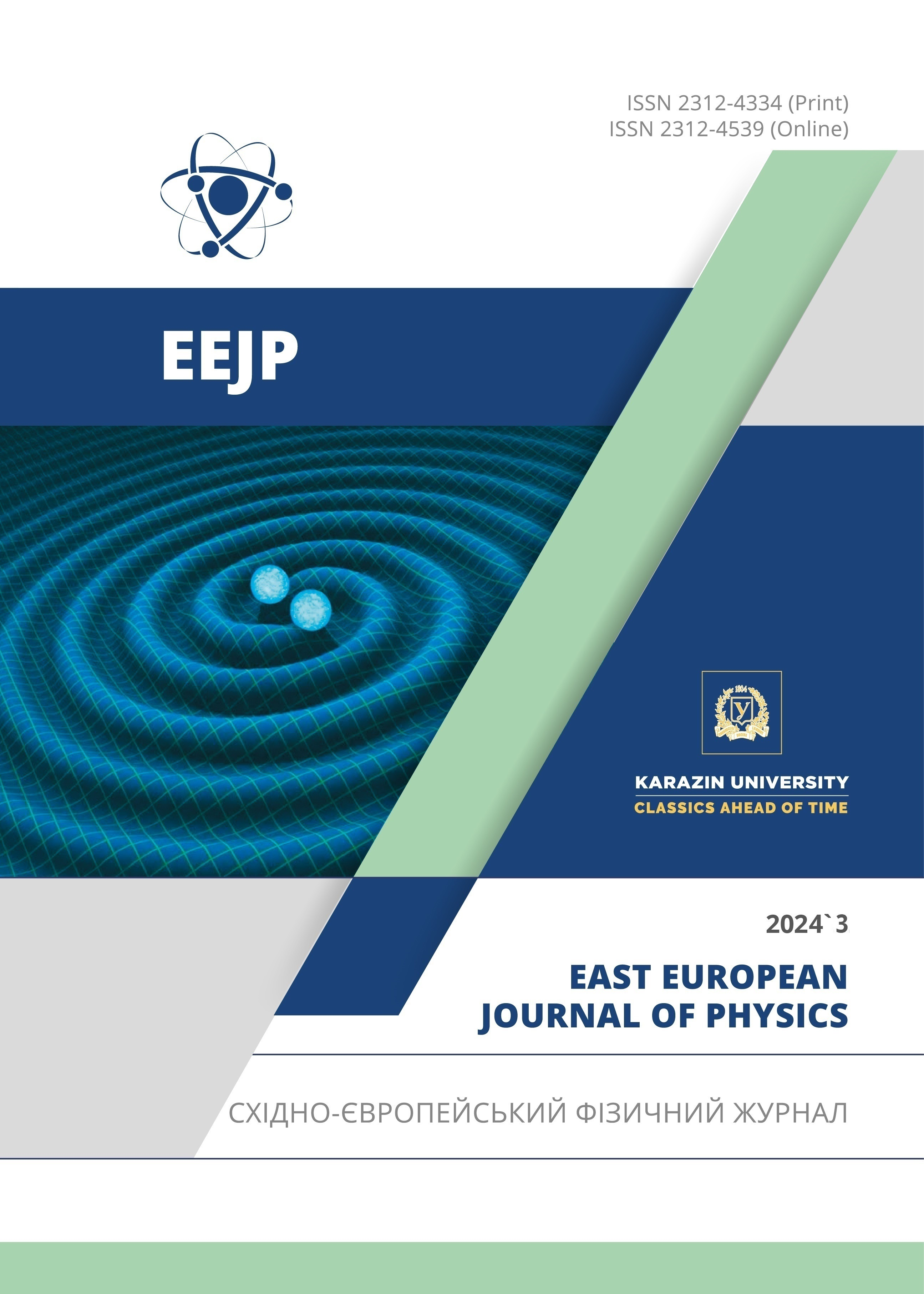Positively Charged Microparticle in Plasma with High-Energy Electron Beam
Abstract
The processes of recharging, heating and evaporation of a positively charged microparticle (MP) introduced into the plasma with an injected high-energy electron beam are considered. It is assumed that the MP is charged outside the plasma and then introduced into the plasma by an accelerating field, where plasma and beam electrons hitting the MP heat and evaporate it. In addition to introducing the MP into the plasma, the positive MP charge provides an additional source of energy needed to heat and evaporate it. Using the OML theory, the system of current and energy balance equations was numerically solved and the conditions, under which the MP is heated to the boiling point of its substance, resulting in its intense evaporation, were determined. The influence of the energy of the electron beam on the process of MP recharging, as well as on the rate of its heating and evaporation, has been studied. An estimate of the particle entry velocity into the plasma has been made; the distances at which its recharging, heating to the boiling point and complete evaporation occur are determined. The work is carried out in order to creating plasma of a given elemental composition.
Downloads
References
B.H. Wolf, in: Handbook of ion sources, edited by B. Wolf (CRC Press Taylor & Francis Group Boca Raton London New York, 1995).
A.A. Bizyukov, A.D. Chibisov, D.V. Chibisov, O.A. Zhernovnykova, T.I. Deуnichenko and N.N. Yunakov, East European Journal of Physics, (1), 110 (2022). https://doi.org/10.26565/2312-4334-2022-1-15
D.V. Chibisov, O.D. Chibisov, O.A. Zhernovnykova, G.V. Deynychenko, and V.V. Masych, Problems of Atomic Science and Technology, 1(143), 17 (2023). https://doi.org/10.46813/2023-143-017
A. Mocker, S. Bugiel, S. Auer, et al., Rev. Sci. Instrum. 82, 095111 (2011). https://doi.org/10.1063/1.3637461
J.D. Kerby, R.T. Daly, and D.E. Austin, Earth Planets Space, 5, 157 (2013). http://dx.doi.org/10.5047/eps.2012.08.005
S.J. Zweben, R. Gueroult, and N.J. Fisch, Phys. Plasmas, 25, 090901 (2018). https://doi.org/10.1063/1.5042845
R. Gueroult, J.-M. Rax, and N.J. Fisch, Journal of Cleaner Production, 182, 1060 (2018). https://doi.org/10.1016/j.jclepro.2018.02.066
R. Gueroult, D.T. Hobbs, and N.J. Fisch, J. Hazardous Mater. 297, 153 (2015). https://doi.org/10.1016/j.jhazmat.2015.04.058
I.D. Kaganovich, A. Smolyakov, Y. Raitses, E. Ahedo, I.G. Mikellides, et al., Phys. Plasmas, 27, 120601 (2020). https://doi.org/10.1063/5.0010135
A.A. Bizyukov, K.N. Sereda, and A.D. Chibisov, Problems of atomic science and technology. Series: Plasma Physics, 1(17), 107 (2011). https://vant.kipt.kharkov.ua/ARTICLE/VANT_2011_1/article_2011_1_107.pdf
A.A. Goncharov, V.Yu. Bazhenov, A.S. Bugaev, A.M. Dobrovolskiy, V.I. Gushenets, I.V. Litovko, I.V. Naiko, and E.M. Oks, IEEE transactions on plasma science, 47(8), 3594 (2019). https://doi.org/10.1109/TPS.2019.2915644
A.A. Goncharov, V.I. Maslov, I.V. Litovko, and A.V. Ryabtsev, Problems of Atomic Science and Technology, 6(142), 89 (2022). https://doi.org/10.46813/2022-142-089
Copyright (c) 2024 Aleksander Bizyukov, Dmitry Chibisov, Aleksandr Chibisov, Oksana Zhernovnykova, Kostyantyn Borysenko, Dmytro Bobyliev, Oksana Shtonda

This work is licensed under a Creative Commons Attribution 4.0 International License.
Authors who publish with this journal agree to the following terms:
- Authors retain copyright and grant the journal right of first publication with the work simultaneously licensed under a Creative Commons Attribution License that allows others to share the work with an acknowledgment of the work's authorship and initial publication in this journal.
- Authors are able to enter into separate, additional contractual arrangements for the non-exclusive distribution of the journal's published version of the work (e.g., post it to an institutional repository or publish it in a book), with an acknowledgment of its initial publication in this journal.
- Authors are permitted and encouraged to post their work online (e.g., in institutional repositories or on their website) prior to and during the submission process, as it can lead to productive exchanges, as well as earlier and greater citation of published work (See The Effect of Open Access).








